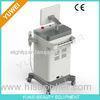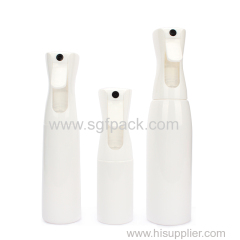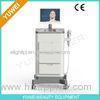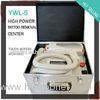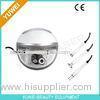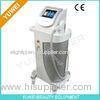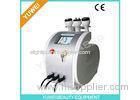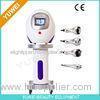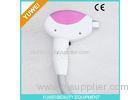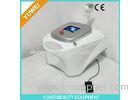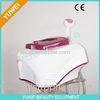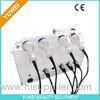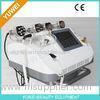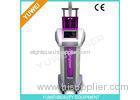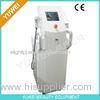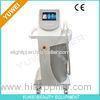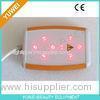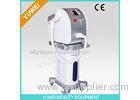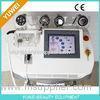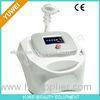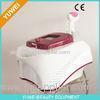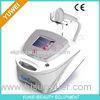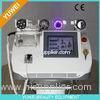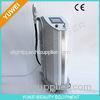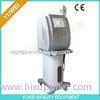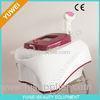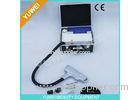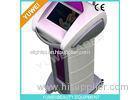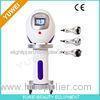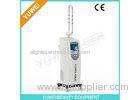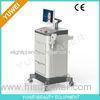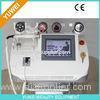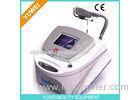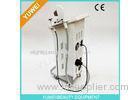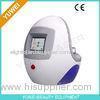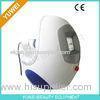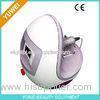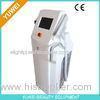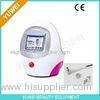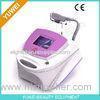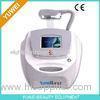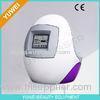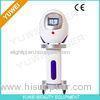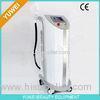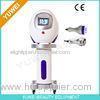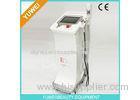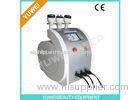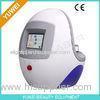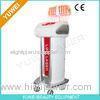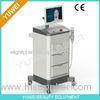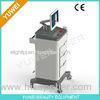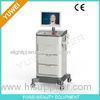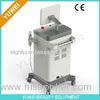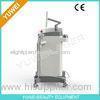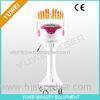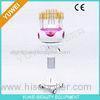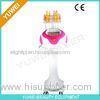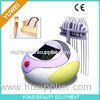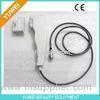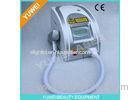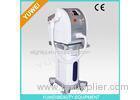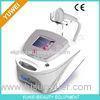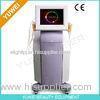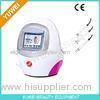|
Yuwei Laser Technology Co., Ltd.
|
Stationary High Intensity Focused Ultrasound HIFU for Skin Lifting 0.15 - 1.5J / CM
| Place of Origin: | Zhejiang, China (Mainland) |
|
|
|
| Add to My Favorites | |
| HiSupplier Escrow |
Product Detail
Stationary High Intensity Focused Ultrasound HIFU for Skin Lifting YUWEI YWH-1
Stationary High Intensity Focused Ultrasound HIFU for Skin Lifting YUWEI YWH-1
Principle of HIFU
- With many other non-invasive fat reduction technologies, such as radiofrequency and lasers, energy is highly absorbed or scattered near the skin surface, thereby limiting penetration into subcutaneous fat tissue and delivering only temporary results. Ultrasound energy, on the other hand, can be used to penetrate through the skin layers and into the targeted fat tissue without harming skin or surrounding tissues. Other ultrasound body contouring technologies often use low-intensity, low-frequency, or unfocused energy which can require multiple treatments and lead to unpredictable results.
- The Lipo sonix system uses high-intensity focused ultrasound energy to non-invasively destroy targeted subcutaneous fat and deliver uniform, predictable results after a single one-hour treatment.


Application
- It is suitable for people over 30, the skin just started to enter the aging, a single therapy can help accelerate the active cells, the treatment effect is more significant and long-lasting.
- It is suitable over 40, the skin issues has appeared sagging and loose, we recommend use different technologies of treatment to ensure effective retard aging and significantly improve the skin problem.
- SMAS contraction : collagen remodeling , elastine fiber contraction.
Advantages
- Real Ultrasound with focused technology.
- Easy for operation , absolutely safety.
- Cost-effective catridge.
- None downtime: skin just become red within the first several hours , then skin recover.
What’s the SMAS?
SMAS (Superficial Muscular Aponeurotic System) is a layer of connective tissue membrane which widely covered in deep tissue under the dermis, which connects fat and facial superficial muscle,extends and consolidates the bone of face, closely contacts epidermis, dermis and subcutaneous tissue together,and these layers structure form the facial contour,support the integrity of skin, muscles and bone.
Handle

Technical Parameters
|
Energy Type |
HIFU |
|
Power |
0.15-1.5J/CM (0.15step) |
|
Cartridge |
1.5mm:4.3mhz (1.5mm) |
|
3.0mm:4.3mhz (3mm) |
|
|
4.5mm:4.3mhz (4.5mm) |
|
|
Screen |
12 inches color touch LCD screen |
|
Spacing |
1mm / 1.5mm / 2mm |
|
Length |
5.0-25mm |
|
Electrical Requirement |
AC 100V-220V,50/60HZ |
|
Dimensions(Main Machine) |
1308*577*500(mm) |
FAQ
1. What is HIFU?
HIFU is short for 'High Intensity Focused Ultrasound'. It is the latest and most reliable ammunition in defending against the sagginess of one's face / jawline / neck. It is the ONLY FDA-APPROVED technology for face and neck lifting. It is also effective in the tightening of underarms and decolletage.
2. What is Ultrasound?
Ultrasound has been in use for decades for medical diagnostics (e.g fetal scans, abdominal scans) and medical therapeutics (e.g shockwave for destroying kidney stones). The research scientists at Ulthera had a breakthrough when they managed to focus this harmless energy source into a concentrated 'bullet' of ultrasound energy. Not only that, they even managed to perfect the technology such that every ultrasound 'bullet' fires into the same depth of tissue everytime, at the exact energy levels required. The targeted tissues are the SMAS (superficial muscular aponeurotic system, the layer targeted by plastic surgeons in a surgical facelift) and the subcutaneous tissue and skin( where collagen and elastin are produced and deposited).
3. How does this ultrasound work in HIFU?
When this focused ultrasound 'bullet' hits the SMAS layer, its energy causes an instant focal contraction of the SMAS layer, resulting in a tightening effect. In one treatment, many ultrasound 'bullets' are fired all over the SMAS layer and the contracted SMAS layer results in an instant 'face / neck lifting' effect. This energy also stimulates the subcutaneous tissue and skin to produce collagen over the next 6 months, resulting in further improvement.
4. Facial Sculpting
Besides lifting, he also uses it on chubby areas of the face ( e.g sides of cheeks, jawline, upper neck) to burn off a little bit of the fat deposits and tighten those areas, giving a more sculpted definition to those areas. It enhances the V-shaped facial silhouette that equates to a younger, more attractive face.
5. Is there any downtime or pain?
The whole procedure (of HIFU for neck and full face) takes around 30 minutes and there is no downtime at all. There is some discomfort during the treatment but that can be managed well with painkillers taken 1 hour before therapy and numbing cream applied 30 minutes prior to treatment.
6. What is the recovery like?
The recovery for HIFU is typically very simple. Patients are able to return to their regular day to day activities immediately following the procedure, and there are no special measures that must be taken. Immediately after the procedure, some patients have reported redness, but this typically goes away on its own within a few hours.
7. What will the results be like?
Following the HIFU procedure, the vast majority of patients will experience a noticeable lifting IMMEDIATELY. Many patients experience firmer, tighter skin that has a smoother texture and more even skin tone. While some results are apparently immediately following the procedure, the full effect develops over the course of two to three months and typically lasts for ten to twelve months. To maintain the full results, many patients may require annual touch-up procedures.

